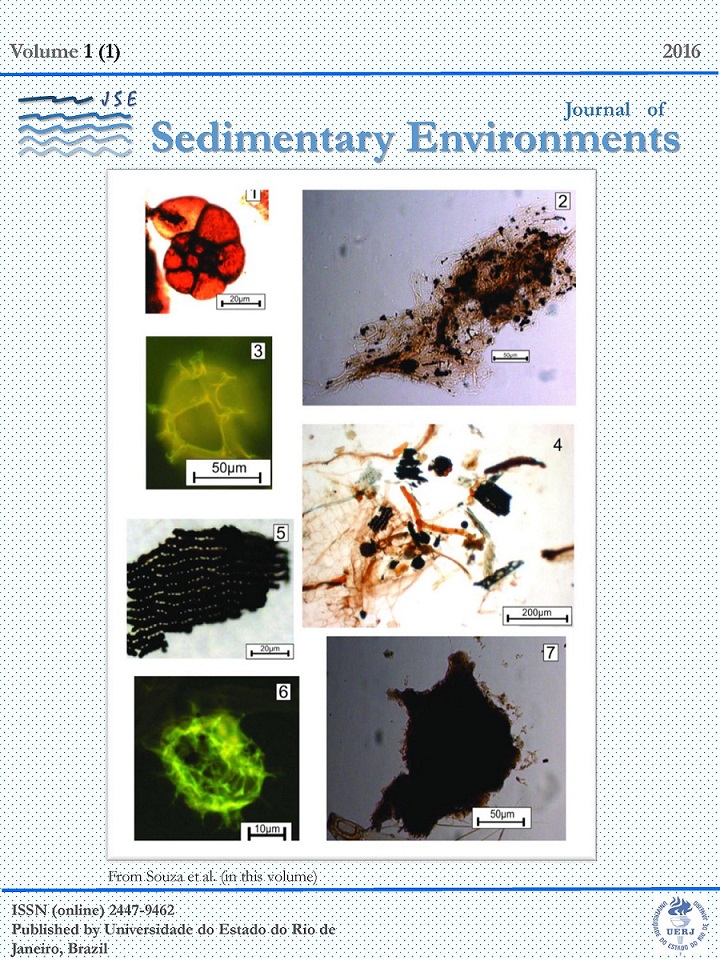ISOTOPE GEOCHEMISTRY AND GEOCHRONOLOGY OF SYN-DEPOSITIONAL VOLCANISM IN PORONGOS METAMORPHIC COMPLEX, SANTANA DA BOA VISTA ANTIFORM, DOM FELICIANO BELT, BRAZIL: ONSET OF AN 800 MA CONTINENTAL ARC
DOI:
https://doi.org/10.12957/jse.2016.22722Palavras-chave:
Porongos Metamorphic Complex, Dom Feliciano Belt, West Gondwana, Geochronology, Isotope GeochemistryResumo
The Porongos Metamorphic Complex (PMC) is composed of supracrustal rocks, predominantly pelitic micaschist, quartzite and felsic metavolcanic rocks. It represents the remnants of a Neoproterozoic sedimentary basin developed in the western Gondwana, now located in the central section of Dom Feliciano Belt in southern Brazil. Isotope signature comparison and U-Pb ages shows that there are at least three main source-areas for the Porongos sediments: (i) one that can be related to Paleoproterozoic terrains; (ii) a younger component with Mesoproterozoic (1.5 - 1.2 Ga) ages; and (iii), a Neoproterozoic source with magmatic zircons (0.8 Ga), with relative age distribution mostly between 1.7 and 1.0 Ga, TDM ages between 2.58 and 1.71 Ga, and younger ages of ca. 1.21 Ga, which can be related to 1.4 - 1.0 African signature sources. Ten concordant analysis obtained in zircon grains from a metarenite rock yield 206Pb/238U median age of 802 +26/-33 Ma, which is related to metavolcanic samples from PMC and correlates with the Neoproterozoic Cerro Bori Continental Arc, indicating a syn-depositional volcanism in the sedimentary record. The depositional setting for these sequences can be understood as an evolution between a passive margin developed after 1.6 Ga and a terrain-collisional setting (ca. 570 Ma).
doi: 10.12957/jse.2016.22722
Downloads
Publicado
Edição
Seção
Licença

Journal of Sedimentary Environments (JSE) is licensed under a Creative Commons Attribution-Noncommercial-Share Alike 4.0 International License.

